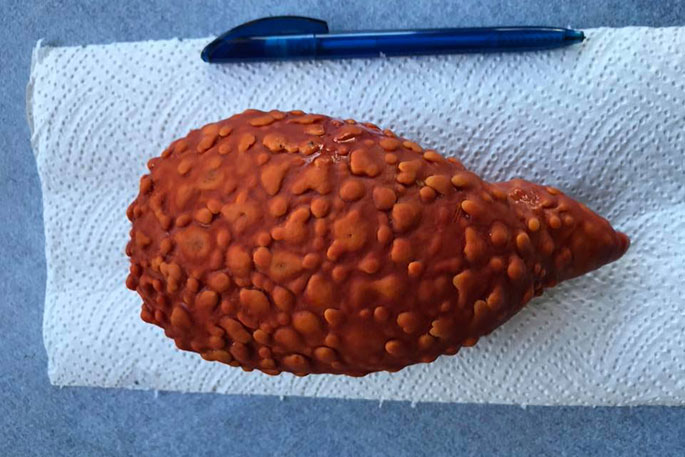Another bizarre wash up at Mount Maunganui beach is the topic of talk amongst many nearby residents.
A Mount Maunganui resident who only wants to be known as Christina, says she found the item on the beach and posted a picture of it to Facebook in the hopes of identifying it.
“I found it on Mount Main Beach yesterday morning after a walk around the Mount.
“I’ve seen tinier versions, but never anything this big. It’s about the same length as a pen, it’s very heavy and it doesn’t smell.
“We’ve had a really good reaction to the post, it’s been called quite a few things. One person said it might be an alien which I thought was quite funny.”
Christina says it’s not the first odd item she’s seen washed up on the beach, but it’s certainly peaked her interest.
“I find lots of things, shells, bird skulls with hooks in them, bones, fish, clothes and glasses, but nothing like this.”

Bay of Plenty Regional Council Chair in Coastal Science Professor Christopher Battershill has identified the mysterious item as being a sea sponge.
“This is a sea sponge, or a polymastia aurantium. When it’s attached to the reef it inflates and is quite soft. Once it breaks off it tends to start to round up and becomes tough to the touch.
“The cells will reorganise so it can roll around on the sea floor for quite a while and remain viable. It 'hopes' to find a rocky outcrop to reattach, but most often in storms they wash up on the beach.”
He says these sponges have some significant properties.
“The cells that allow sea sponges to reshape are interesting as they are like stem cells. They can change functions reversibly.
“This is why sponges are looked at frequently for sources of chemicals for medicine such as cancer and immune diseases.”
Chris says the particular species of sponge discovered this week are okay to handle, but with caution.
“People should wash their hands afterwards because of their bioactive chemistry. They also have small spicules inside the spongin fibres, or collagen, which support the structure.
“These spicules are made of silicon, very much like glass, so again some care should be used in handling them.
“Some of the other sponges, specifically cave and deep water species, have massive glass spicules that can run through skin very easily and these are not good for you.
“Other sponges also have neurotoxins in them which can cause a tingling in your fingers if touched.”
He says the latter species are present in the Bay of Plenty.
“This sponge is reasonably common on reefs in the Bay. They pump massive amounts of water and strip microorganisms and very small plankton out.”



0 Comments
Leave a Comment